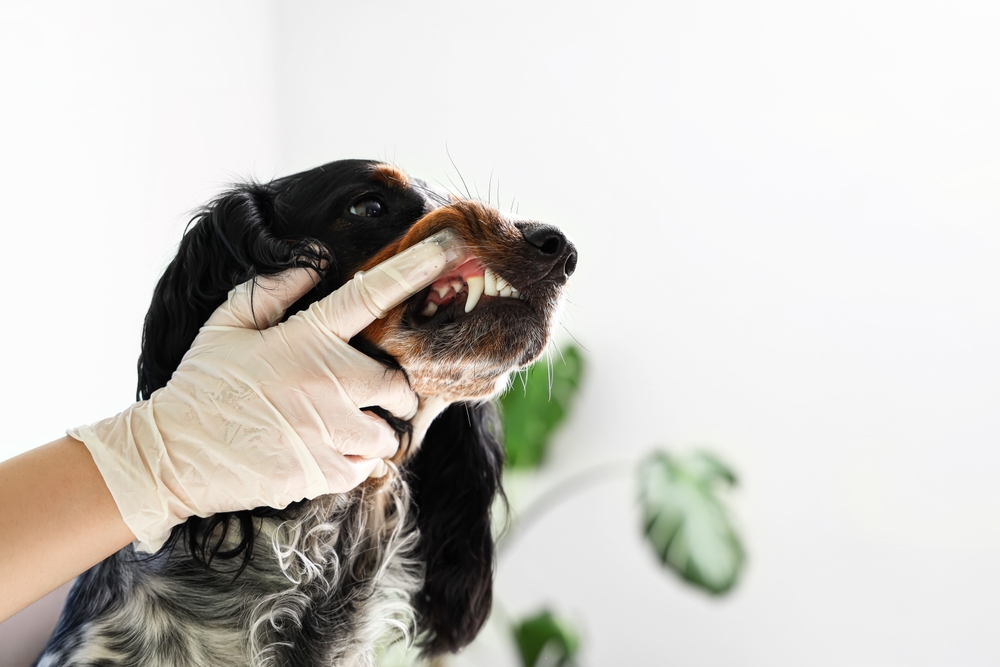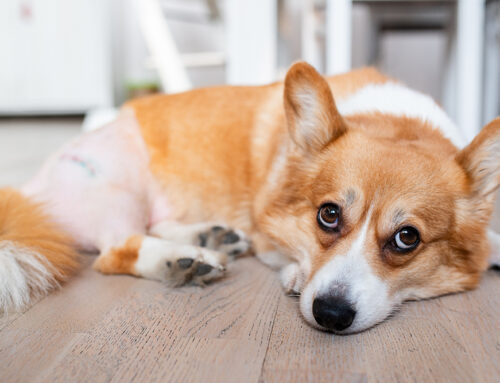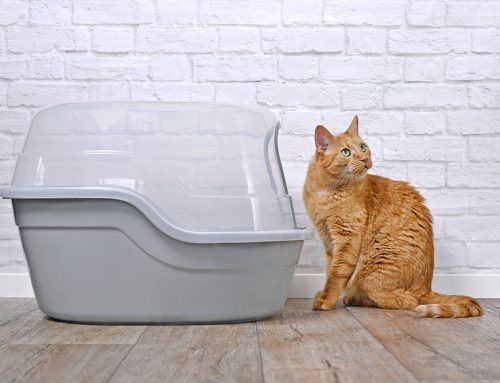Keeping our pets’ mouths healthy is one of the most important—and most misunderstood—parts of preventive care. At LaGrange Veterinary Hospital, we hear questions every week about “quick” or “natural” non-anesthetic dental cleanings (often called NADs). On the surface they sound appealing: no anesthesia, a smaller price tag, and a shiny smile when it’s done. Yet when we look beneath that glossy exterior, we find real medical shortcomings and very real risks.
What Are Non-Anesthetic Dental Cleanings?
During an NAD, a practitioner manually scales away visible plaque while the pet is awake. Because a fearful or painful reaction could ruin the procedure, the pet’s head is commonly restrained, and sharp instruments work only where the hand can reach—above the gumline. That means 60–70 percent of the tooth (the part hidden under the gums) stays untouched, along with any infection that may already be brewing there.
The Appeal—and the Illusion—of a Gleaming Smile
We completely understand why owners are tempted. Nobody likes to think about anesthesia, and any of us would jump at the chance to save money. Unfortunately, the white-tooth surface you see after an NAD is only cosmetic. It’s like putting a coat of white paint over a dirty, moldy wall-, the hidden disease remains. When you later discover loose teeth, oral abscesses, or foul breath, it can feel as if the cleaning was a scam—and, medically speaking, that’s not far from the truth.
Medical Risks We Can’t Ignore
Pain and Stress in the Moment
Even a placid cat may flinch when a metal scaler touches an inflamed gum pocket. That sudden jerk can slice soft tissue or gouge enamel. In our exam rooms we routinely manage oral pain, so we know how subtle it can be; a dog that looks “fine” can still be frightened or hurting.
Missed Infection Below the Gumline
Subgingival plaque is the engine driving periodontal disease. Because NAD providers cannot probe, chart, or polish under the gums, the infection smolders on. The American Veterinary Medical Association outlines how this silent progression can shorten life spans in its resource Pet Dental Care – AVMA.
Accidental Aspiration
Without an endotracheal tube to protect the airway, bits of tartar, water, or even bacteria-laden saliva can slip into the lungs. Aspiration pneumonia is a life-threatening emergency that often shows up days later as fever, coughing, or rapid breathing.
Missed or Misdiagnosed Conditions
Hidden fractures, resorptive lesions, and oral tumors require X-rays and careful probing to identify. The Oral Tumors of Small Animals guide from ACVS illustrates how subtle some of these masses can be; a quick surface cleaning will never find them in time.
Why General Anesthesia Is the Standard of Care
When we place a patient under anesthesia, we control pain, prevent fear, secure the airway, and allow a 360-degree evaluation of every tooth. High-definition dental radiographs catch root problems invisible to the eye, as explained in The Importance of Dental X-Rays for Pets – Preventive Vet. After we scale above and below the gumline, a final polish smooths microscopic scratches so plaque cannot grab hold again. Your pet wakes up comfortable, and you go home with an accurate dental chart, photos, and a treatment plan.
Modern anesthetic protocols are individualized, monitored by trained technicians, and guided by safe drugs, as outlined in Anesthesia and Dental Cleaning for Pets – AAHA. The controlled environment is worlds apart from holding a wriggling dog’s head in a groomer’s back room.
Periodontal Disease: What Happens When We Look Away
Early gingivitis begins with bad breath and reddened gums. Left untreated, the infection travels down the root, destroying the bone that anchors teeth. Eventually teeth fall out or need surgical extraction. Bacteria also slip into the bloodstream, affecting the heart, liver, and kidneys. The AAHA brochure Healthy Mouth, Healthy Pet: Why Dental Care Matters explains how closely oral and systemic health are intertwined.
Small breeds are particularly vulnerable; the Guide to Dental Disease in Small Breed Dogs – Royal Canin notes that toy dogs can lose half their teeth by middle age if the disease is unchecked. Owners often blame “small-dog breath,” when in reality those dogs are living with chronic pain.
Home-Care Strategies That Really Work
- Tooth-brushing: Nothing beats daily brushing with a pet-safe enzymatic toothpaste.
- VOHC-accepted products: Look for the seal from the Veterinary Oral Health Council – VOHC; these chews and diets meet objective standards for plaque control.
- Smart toy choices: Overly hard toys can crack enamel.
- Early puppy and kitten checks: Retained baby teeth create overcrowding and traps for food, often requiring the procedure outlined in Deciduous Canine Tooth Removal in Dogs – Today’s Veterinary Practice.
- Watch development: Malocclusion can derail a young pet’s bite; see the primer ABCs of Veterinary Dentistry: Malposition and Malocclusion – DVM360.
If you have questions about products or techniques, explore our comprehensive list of services or call us—guidance is part of preventive care.
When Is Dental Disease an Emergency?
- Sudden refusal to eat or dropping food
- Facial swelling or a visible draining tract
- Blood-tinged drool or oral bleeding
- Chattering of the jaw when eating
- Severe ulcers, as detailed in Oral Inflammatory and Ulcerative Disease in Small Animals – Merck Vet Manual
If you see any of these signs, phone us right away. Quick intervention can save teeth—and sometimes lives.
Special Considerations for Growing Pets
Congenital issues like cleft palate can complicate dental care from day one. Developmental enamel defects or supernumerary teeth also need professional attention, as reviewed in Developmental Abnormalities of the Mouth and Dentition in Small Animals – Merck Veterinary Manual. Early diagnosis means gentler treatment and better long-term comfort.
Frequently Asked Questions
How often will my pet need a professional cleaning?
We tailor recommendations, but many dogs and cats thrive on annual cleanings. Toy breeds or pets with crowded mouths may need every six months.
Is anesthesia safe for my senior pet?
Age alone is not a disease. We perform pre-anesthetic blood work, customize drug choices, and monitor every heartbeat and breath. The risk of unmanaged dental infection is often far greater than the well-managed risk of anesthesia.
My pet had an NAD last year—does that change anything?
It tells us to look even closer. We’ll take fresh radiographs to find any damage or missed disease and create a forward-looking treatment plan.
Can I see the problem areas myself?
Absolutely. After the procedure we show you digital photos and X-rays so you can see before-and-after results. Understanding the “why” behind extractions or periodontal therapy helps you stay engaged in home care.
Practical Tips You Can Start Tonight
- Offer a soft-bristle child’s toothbrush topped with a little peanut butter or cream cheese after your dog’s evening walk; let them lick it off and pair it with praise, not force.
- Swap hard nylon bones for rubber chews that pass the “thumbnail test” (they dent under pressure).
- Keep a log of mouth odors, gum color, and eating habits; subtle changes matter.
- Schedule the first dental consult at six months of age or earlier, before permanent teeth are fully set.
Small, consistent steps at home mean less time under anesthesia and lower lifetime dental costs.

We’re Here to Help
Our entire team believes that compassionate dentistry is preventive medicine. If you notice worrisome signs, have questions about brushing technique, or simply want an honest opinion about NADs, reach out through our contact page. Together we can protect your pet from needless pain, keep infections from spreading, and ensure many more years of playful, pain-free chewing.








Leave A Comment